| Article Index |
|---|
| Start |
| Our experience |
| Sponsors |
| Honnoray Patrons |

In the face of the companies will do well IED environment, but if the investments may pay off financially too?
"Talk about related substances under the BATs, the discussion at the level of philosophy ... in the process of implementation of the Directive Member States in great detail renegotiated requirements, while about BATs they are talking backstage. I can not shake the feeling that the government gets out a little out of control.."
Wiesław Jamiołkowski,
Director of the Department of Environmental Protection
PGNiG TERMIKA S.A.
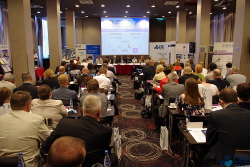 IED Directive came into force in 2011. A milestone was the moment when ended the so-called transition period. At the beginning of 2013 the Directive came into force on the newly created installation. Implementation of the Directive in relation to the existing plant will take place in 2016, in some cases there temporary derogations will be possible. Because of the new responsibilities the company were in some measure forced to make the modernization of reducing industrial emissions, and therefore CBE Polish team decided to organize a 'IED Forum" dedicated to the regulations, technologies and investments related to Directive 2010/75/EU, ie. Industrial Emissions Directive . The event took place on 22nd May in Warsaw and brought together around 130 experts from industries obliged to reduce emissions.
IED Directive came into force in 2011. A milestone was the moment when ended the so-called transition period. At the beginning of 2013 the Directive came into force on the newly created installation. Implementation of the Directive in relation to the existing plant will take place in 2016, in some cases there temporary derogations will be possible. Because of the new responsibilities the company were in some measure forced to make the modernization of reducing industrial emissions, and therefore CBE Polish team decided to organize a 'IED Forum" dedicated to the regulations, technologies and investments related to Directive 2010/75/EU, ie. Industrial Emissions Directive . The event took place on 22nd May in Warsaw and brought together around 130 experts from industries obliged to reduce emissions.A number of transitional national plans to facilitate the transition to the new legal reality, however, their validity will be completed in 2020 and the derogation period in 2023. Information about these plans had to be sent to the European Commission in early 2013, but in some cases there were delays and continued correspondence on these plans. At the beginning of May 2014 the EC notified of the approval of plans for Bulgaria, Finland, Greece, Hungary, Ireland, Lithuania, Poland, Slovak Republic, Slovenia, Spain and the United Kingdom. The works on plans still continous for the Czech Republic and Croatia.
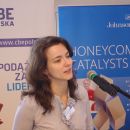 Hélène Lavray, Advisor in the Environment & Sustainable Development Policy Unit EURELECTRIC - the European trade association representing the interests of the energy sector in Brussels. Ms Lavrey announced that consultants have prepared a number of working documents about the use, production and release of various hazardous substances. EURELECTRIC representative added that the reports are still to be prepare about the pollution of soil and groundwater. Before starting operations after 7 January 2013 there apeared problems at national levels due to the delay in the publication of the guidelines in the EC. Previously, countries develop their own guidelines, there were worries if any discrepancies will occur.
Hélène Lavray, Advisor in the Environment & Sustainable Development Policy Unit EURELECTRIC - the European trade association representing the interests of the energy sector in Brussels. Ms Lavrey announced that consultants have prepared a number of working documents about the use, production and release of various hazardous substances. EURELECTRIC representative added that the reports are still to be prepare about the pollution of soil and groundwater. Before starting operations after 7 January 2013 there apeared problems at national levels due to the delay in the publication of the guidelines in the EC. Previously, countries develop their own guidelines, there were worries if any discrepancies will occur.The most important element of the Industrial Emissions Directive seems to be the BAT conclusions. Document on the BAT proposals will be adopted by the EC in the form of decision and will form the basis for the granting permits, so it is very important for future practice. EURELECTRIC was not satisfied with the conclusions of previous documents, as some sectors have already begun revisions practices before the adoption of the Directive. The preparatory process was action on a large scale, it was based on the information sent from experts from different Member States who have provided their research and reports. More than 500 questionnaires sent by member states has been analyzed.
Revision began in 2011, from the official reactivation of the technical working group. Start-up meeting was held in October 2011. The range of verification was agreed by over 100 people. For a month IPPC office will organize a meeting, during which issues will be outlined on partial heating networks loading and energy efficiency. According to the official schedule, the final conclusions of the technical working group should be formulated at the end of 2014, however, according to EURELECRIC representative we can expect delays. The next step will be to issue an opinion on Article 13 of the IED. Then, the final decision will be taken by EC. It is estimated that this will happen before the end of 2015. So member states will have 4 years to verify and accept the provisions.
We do not have a clear position how the BAT conclusions will be related to the derogations laid down in Chapter 3 of the Directive. A few weeks ago, the European Commission has issued interpretations regarding the most frequently asked questions related to the IED directive, according to the interpretation, it can be concluded that the installations, which are subject to the derogation mechanisms and flexible constraints defined by Art. No 32-35, shall not apply to Article 15 paragraph 3 with respect to certain air pollutants and these installations do not have to ask for derogations pursuant to Article 15 paragraph 4 of the Directive.
Plants that can not benefit from the derogation, may exercise the powers granted by Article. 15 paragraph. 3, but the Article 18 about the quality standards - applies to all installations. The interpretations have still gabs associated with certain substances. There are also problems with the consistency - relying on the monthly, daily and hourly values from Annex 5, while in the BREF LPC draft we have the annual and daily values, so it is difficult to determine the monthly values based on annual averages. Translating these values is not possible, especially since we usually deal with ranges of values (lower and upper).
The EC's proposal is a "Program of clean air for Europe". It proposes to carry out inspections and re-analyzes of emission reduction and the re-creation of the directive proposal for medium-sized combustion plants (so called MCP). In 2007, it was intended to cover with the IED Directive installations above 20MW (eventually it covered the units with the capacity above 50 MW). There is an idea to set mandatory emission reductions and commitments for the period 2020-2030. National levels are not as ambitious as the EC's at the European level, however, it seems that the larger national efforts should be undertaken. Theoretically program should be adopted btill 2020.
New reduction commitments are requested for methane, ammonia, and volatile organic compounds. Till 2020 the Gothenburg Protocol should be adopted, and till 2030 has to be the closure 70% of the MTFE. Gabs. Miss Lavray also drew attention to the fact that sectors such as transport and households emit a huge amount of substance. This raises the question of whether the industry, including power utilities into it, should be burdened with the obligation to compensate the poor performance in reducing emissions from non-industrial issuers?
Integrated permits, BAT conclusions, the reports ... transposition of the Directive IED is a complex process
Industrial Emissions Directive (2010/75/EU dated on 24 November 2010, so-called. IED) in Poland transposes the Environmental Protection Law, which states, how to apply for an integrated permits, describes the range of decisions related to their assignment. Keep in mind that Environmental Protection Law introduces not only emission standards arising directly from the IED (the so-called boundary conditions or initial) - but boundary conditions, so called BAT conclusions, which may be more stringent than the standards resulting directly from the IED directive. In order to not ctause a situation in which operators have to adapt immediately to the new legal reality, temporary derogations are provided dedicated to a group of objects.
The amendment of the Environmental Protection Law is not a complete transposition, detailed technical specifications will be defined in the implementing legislation to the Act, including in the regulation of the Ministery of the Environment about the installations types which may cause significant pollution of nature individual elements or the environment as a whole or the regulation of the Ministery of the Environment about the value of the registration fees. The most important is the transfer of emission standards, the regulation of the Ministery of the Environment amendment dated on 22nd April 2011, which will apply to the energy sector, incineration and co-incineration of waste plants, production of titanium dioxide and the production and use of volatile organic compounds. An important element resulting from the transposition is also the amendment to the regulation of Ministery of the Environment about requirements of the emissins measurements and measuring the quantity of abstracted water.
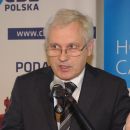 Roman Głaz, Vice Director of the Department of Air Protection in Ministry of the Environment noted that the installations which require an integrated permit shall comply with the requirements of environmental protection resulting from the best available techniques, without prescribing the use of any technique or technology, in particular, may not result in exceeding the ELVs. These ELVs represent the highest value in the range specified in the Implementing Decisions of the European Commission formulating BAT conclusions. In the integrated permit for installations requiring integrated permit, shall be discribed the scope and method of monitoring emissions in line with the monitoring requirements set out in the BAT conclusions, if they are specified.
Roman Głaz, Vice Director of the Department of Air Protection in Ministry of the Environment noted that the installations which require an integrated permit shall comply with the requirements of environmental protection resulting from the best available techniques, without prescribing the use of any technique or technology, in particular, may not result in exceeding the ELVs. These ELVs represent the highest value in the range specified in the Implementing Decisions of the European Commission formulating BAT conclusions. In the integrated permit for installations requiring integrated permit, shall be discribed the scope and method of monitoring emissions in line with the monitoring requirements set out in the BAT conclusions, if they are specified.In Poland, we have over 3500 installations covered by the requirement to obtain an integrated permit, but the transposition of Annex I to IED Directive introduces the obligation to obtain an integrated permit for new types of installations such as: the installation for the production of wood-based panels with a capacity of greater / equal to 600 m3/day, for industrial waste water treatment plants which treat waste water from at least one installation which requires integrated permition. New types of installations should get Pintegrated permition till 1st July 2015.
Ministery of the Environment representative stressed that the BAT conclusions would not have to be applied a priori, in justified cases, the competent authority to issue an integrated permit may, at the request of the operator, to grant derogations to limited size of the emissions. If in his opinion their achievement will lead to disproportionately high costs compared to the environmental benefits, and provided that they are not exceeded emission standards from the IED Directive.
When assessing the derogation, the competent authority should take into account the geographical location (eg, location of the facility near the coal mine), local environmental conditions, the technical characteristics of the installation and other factors affecting the operation of the installation and the environment as a whole. If the BAT conclusions have not been published, the emission limit value of the installation shall be determined by taking into account the need to comply with the applicable emission standards and enviromental quality standards.
If the installation operation involves the use, production or release substances that cause risks and there is the possibility of contamination of soil, ground water or groundwater on the site, the application for an integrated permit shall include an initial report containing information about the state of pollution of soil and groundwater with these substances. Prior to the closure of the plant, for which the initial report was required, the operator shall prepare and submit to the authority competent to issue permits the final report, which contains information concerning the substances that cause the risk of contamination of soil, ground and groundwater on the site.
Roman Głaz recalled that due to the significant impact of the BAT Conclusions on the shape of integrated permits, representatives of installations obliged by the IED should actively participate in the work of the Technical Working Groups.
Impact of IED is huge, why we speaks and writes about it so little?
Dr. Eng. Włodzimierz A. Sokół, Manager of International Projects, Director of the National Contact Point for Eco-efficient Technologies and Management Systems in Central Mining Institute concluded that there is said and written a lot about the climate and energy package, energy security and a new period of CO2 emissions trade, while important for the industry IED directive in industry articles and discussions, does not appear too often. Is replacing many directives wih one directive and BAT conclusions, simplifies or complicates the system to prevent and control industrial emissions? Is it real need, whether it is in the interests of provider of technology and solutions?
According to Hélène Lavray, combined the instruments was a good idea, the problem is with completely new principles. Doubt raise issues of consistency, especially between Chapter 2 and 3. Derogations in the 3rd chapter and the BAT conclusions in the 2nd chapter in many countries have been variously interpreted. The great change is that the BAT conclusions are practically mandatory, with a few exceptions laid down in Article 15 paragraph. 4 of the Directive. Operators are waiting to see how the new rules will work, before making investment decisions. According Lavray, the combination of different legal orders either complicated nor simplify the issue of the reduction of industrial emissions. Reinforcement of the requirements of the EU has resulted in the introduction of many changes in the energy sector, and the IED directive was to create a level playing field and to motivate the use of new technologies and solutions. The installation itself must decide which solution should be applied, the directive merely navigate to the choice that will reduce the negative impact on the environment.
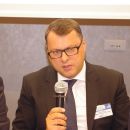 Tomasz Gawlik, Chairman of the Board of Spółka Energetyczna Jastrzębie announced that the two currently ongoing investment programs by SEJ related to Directive IED - Energy Investment Program 2016 and the Adjustment Program of the Capital Group to the requirements of IEDs - are associated with expenditures approximately of 900 million PLN, and the group generats revenues of 400 million $. Many investment would not have been taken if not for the requirements of the Directive. SEJ case is special because it belongs to JSW group (Jastrzębska Spółka Węglowa) and synergies are possible. If they won't be, SEJ did not gain any grants.
Tomasz Gawlik, Chairman of the Board of Spółka Energetyczna Jastrzębie announced that the two currently ongoing investment programs by SEJ related to Directive IED - Energy Investment Program 2016 and the Adjustment Program of the Capital Group to the requirements of IEDs - are associated with expenditures approximately of 900 million PLN, and the group generats revenues of 400 million $. Many investment would not have been taken if not for the requirements of the Directive. SEJ case is special because it belongs to JSW group (Jastrzębska Spółka Węglowa) and synergies are possible. If they won't be, SEJ did not gain any grants.Konrad Nowak, CEO, MPEC Sp. z o.o. in Olsztyn said that the investments would have impact on the price of heat. Olsztyn company representative added that in order to obtain a derogation heat distribution, MPEC will be forced to eliminate one of the boilers before year 2016. Expert reported that heat adaptation to the requirements of the IED will cost around 50 million PLN, which is almost the replacement value of all the assets of the company. At the beginning of 2023 the price of heat, according to preliminary estimates, will increase by about 35%. The Energy Regulatory Office allows price increases of heat at the level of inflation, so the mentioned price increase would be difficult to accept.
Lidia Widera, Senior Specialist in the Department of Environmental Protection TAURON Wytwarzanie S.A. announced the planned method of implementation of Directive 2010/75/EU of the EP and of the Council dated on 24 November 2010 on industrial emissions in TAURON Wytwarzanie S.A. In the case of a pulverized coal boilers firing coal for thermal power introduced in fuel 340 MWt (120 MWe units) TAURON Wytwarzanie S.A. took advantage of one of the flexible mechanisms under Articles. 33 of IED. Blocks after working 17 500h will be excluded from the operation. In relation to a group of 10 boilers fired with pulverized coal-fired thermal power introduced in fuel 560 MWt (225 MWe units), due to the planned duration of the operation of these units over year 2025, they are adapted to the requirements of the Directive in the form of direct implementation of emission standards. Adapting blocks to the requirements of the Directive in terms of NOx is to reduce emissions by installing flue gas denitrification, which will ends before the due date. When it comes to keeping the SO2 standard, these units are equipped with desulphurization wet limestone which enables them to meet the required emissions standard, which is 200 mg/Nm3. At the same time wet desulphurization reduce dust emissions below the required standard. The company also has a biomass-fired boilers, which as of today meet the requirements of the Directive IED. CFB boilers, due to the expected life of more than year 2025, will be adjusted by the direct implementation of the Directive by emission standards. Adaptation of the above mentioned units with respect to SO2 will consist among others the modification of the installation of giving sorbent, purchasing of fuel with low sulfur content. For the adjustment of the appropriate standard for NOx the works will consist among other the optimization of the combustion process.
Capital expenditures for modernization associated with the extension of the liveliness of the generating units and the adaptation of 10 blocks of 225 MW in TAURON Wytwarzanie S.A. to the requirements of the Directive IED are on level in average of 110 million PLN for 1 block. Part of the investment is co-financed from the Operational Programme "Infrastructure and Environment 2007 - 2013" by the National Fund for Environmental Protection and Water Management.
Please note that the IED is not only about power and heat generators. Significant beneficiary of the new regulations is also the cement industry, which in Poland has been completely modernized in the 90s. Technically, the cement industry in our country is not very diverse, all plants are equipped with BAT's technology. In Poland there are 10 plants with production lines with a stove, only one of them uses the wet method - announced Bożena Środa, Senior Specialist in the Association of Cement Producers. The expert stressed that the energy-intensive industry invests primarily to lower the production costs. Upgrades involving construction of new lines made possible to reduce heat consumption by over 40%, also by that managed to reduce emissions. Ms Środa recalled that in the 90s cement plants have begun to use alternative fuels, and therefore they were subject to the requirements of the Directive on the waste incineration, which regulations were included into the IED. It is worth noting that for the cement industry as one of the first in Poland, had been developed (and published in March 2013) BAT conclusions. Under the new standards, the cement industry must reduce the level of nitrogens oxides from 800 to 500 mg / m^3, and therefore all installations have to build installations non-catalytic reduction of nitrogen oxides - each such installation costs approx. 1 million Euro and these expences do not return. In the future, the cement industry will have to invest more in upgrades to reduce dust and mercury emission.
Roman Głaz reported that the total cost of modernization in order to adapt to the requirements of the Directive, according to estimates of the Ministry of Enviroment, will be at the level of about 12 billion PLN, but with derogations time this amount can be reduced about 10 times. Costs are high, but a representative of the Ministry of Enviroment reminded that investments in the air protection it is investing in our health and reducing society treatment costs. Agata Staniewska representing the Polish Confederation Lewiatan asked how these costs can be reduced by spreading them over time. The representative of the Ministry of Enviroment announced that the Warsaw University of Technology conducted the analysis, and that in their opinion, a substantial part of the cost can be reduced by bringing some plants to "technical death", after all, upgrading old inefficient facilities would be very expensive.
Wieslaw Jamiołkowski, Director of the Department of Environmental Protection in PGNiG SA Termika stated with that the fees for use of the environment are inappropriately too low and do not justify the investment to be carried out by the industry. The economic element would motivate and give the argument that it is worth investing in the environment.
Wojciech Stawiany from the National Fund for Environmental Protection and Water Management reported on the currently assessed project "Low-emission economy plans in the municipalities", to which application ended in December last year. Stawiany reported that 35% of municipalities submitted applications to develop these programs. National Fund will receive money to cover 80% of the value of the investments. Additionally, the National Fund runs a KAWKA program dedicated organizational units, which are specified in air protection programs approved by the Province Marshals. Appling is open till 30th September through Provincial Funds. You can get a total up to 90% (National Fund gives 45%, Provincial Funds - within their capabilities - they can make twice as much). The next program will cover energy audits (up to 70% of the grant, with the assumption that it will end with the recommendations of at least 7% improvement in energy efficiency or energy savings), renovations (up to 75% of eligible costs) and low-resource economy - upon presentation of projects which saves 15% of the materials or water. The program will be announced on 21st July, applications can be submitted from 21st August to 21st September. National Found will start in August a program for small and medium-sized enterprises, which will be a continuation of the program PolSEFF. Bonuses will amount to 10-20% with an option to obtain an additional 15% surcharge for credit when it will be implemented the environmental management system.
Environmental Safety by AIG eye
The legal basis for the environmental safety effectively is define by 2004/35 / EC Directive of the European Parliament and of the Council dated on 21 April 2004, which was implemented into Polish law with the Act dated on 13th April 2007 about prevention of environmental damage and its repair. This Act came into force on 30th April 2007 and about a year later came into force two important implementing regulations: Regulation of the Minister of Environmentdated on 30th April 2008 concerning the evaluation criteria of environmental damage and the Regulation of the Minister of Environment dated on 4th June 2008 about the types of corrective actions and conditions and how they are conducted.
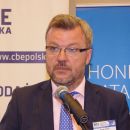 Paweł Holnicki-Szulc, Regional Director responsible for the development of environmental insurance in AIG reminded that, in accordance with the mentioned Act, the environment users are responsible for causing environmental damage or imminent threat of damage. Environmental damage may relate to four areas: the surface of the earth, water, protected species or protected habitats. In accordance with the rule "polluter pays", always the cost of preventive or corrective actions shall be covered by the user of the environment. The Act indicates that corrective actions should be agreed in its terms with environmental protection authority, which is the Regional Director of Enviromental Protection. Reprezsentative of AIG also reminded that the access to information on the state and protection of the environment is universal (according to Art. 74. Paragraph 3 of the Polish Constitution). By information about the environment and its protection should be understood the messages about the environment (or its element), concerning his status, evaluations, intentions, of the purpose or use, the expected impact on the environment and measures to counter this impact. The principle of information is transparency, but in some cases, for example to protect public safety, the rights of others, environmental protection and ecological safety, or due to business confidentiality, there were provided exceptions to the principle of access to information. Paweł Holnicki-Szulc presented to participants several examples on environmental damage, among others, catastrophe in Gutkowo and accident in Wilczowoli in 2012. The expert stressed that environmental damage repair takes years and requires a huge investment of money. AIG's offer has different mechanisms to insure environmental risks - their detailed specifications may be obtained by contacting the company.
Paweł Holnicki-Szulc, Regional Director responsible for the development of environmental insurance in AIG reminded that, in accordance with the mentioned Act, the environment users are responsible for causing environmental damage or imminent threat of damage. Environmental damage may relate to four areas: the surface of the earth, water, protected species or protected habitats. In accordance with the rule "polluter pays", always the cost of preventive or corrective actions shall be covered by the user of the environment. The Act indicates that corrective actions should be agreed in its terms with environmental protection authority, which is the Regional Director of Enviromental Protection. Reprezsentative of AIG also reminded that the access to information on the state and protection of the environment is universal (according to Art. 74. Paragraph 3 of the Polish Constitution). By information about the environment and its protection should be understood the messages about the environment (or its element), concerning his status, evaluations, intentions, of the purpose or use, the expected impact on the environment and measures to counter this impact. The principle of information is transparency, but in some cases, for example to protect public safety, the rights of others, environmental protection and ecological safety, or due to business confidentiality, there were provided exceptions to the principle of access to information. Paweł Holnicki-Szulc presented to participants several examples on environmental damage, among others, catastrophe in Gutkowo and accident in Wilczowoli in 2012. The expert stressed that environmental damage repair takes years and requires a huge investment of money. AIG's offer has different mechanisms to insure environmental risks - their detailed specifications may be obtained by contacting the company.Huge SEJ investment "inspired by" the IED Directive - how to reconcile environmental protection with business
Taking into account the implementation of IED from 2016., SEJ has carried out activities in the form of technical and economic analyzes since 2007. The studies provided data on the possibility of restoration of capacity, which could replace the worn-out and do not meet current standards of efficiency and emission units at EC Zofiówka.
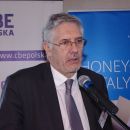 Zbigniew Opałko, Deputy Chairman of the Board and Director of Development in SEJ SA reported that the contract for the block is for 507 million PLN. The expert stressed that meet the requirements of the Directive was only one of the elements that decided about starting the investment. The project of building block in CFB Zofiówka solves the problem of the impossibility of conducting efficient financially and socially production of electricity and heat in CHP after the entry into force of the IED Directive in January 2016. Sustain production and increase the its amount from 2016 is primarily possible due to synergy with JSW, namely thanks to the combustion of coal slurry. According to information provided by the representative of SEJ project will allow to burn the low-calorie coal from JSW, to increase the energy efficiency EC Zofiówka for approx. 30% and significantly reduce emissions of SO2, NOx, CO2 and dust (195, 150, 10), in other words to meet the requirements of the IED. Of course, thanks to the project it will bepossible to meet the consumers needs and the restoration of SEJ production assets in EC Zofiówk, as well as secure operation of the power plant economically viable for another 30 years. After delivering a lecture Opałko said: "If you want, you can. If you have a bit of luck and a good environment, and you can catch a lot of synergy, you are able to reconcile the legal requirements with a normal business - cost-effective and rational... In the eyes of the bank the project must have a chance of success. Our project banks assessed positively, which confirmed our belief that models repared by us defend themselves not only in the eyes of our analysts, but also in the eyes of those who live from borrowing money."
Zbigniew Opałko, Deputy Chairman of the Board and Director of Development in SEJ SA reported that the contract for the block is for 507 million PLN. The expert stressed that meet the requirements of the Directive was only one of the elements that decided about starting the investment. The project of building block in CFB Zofiówka solves the problem of the impossibility of conducting efficient financially and socially production of electricity and heat in CHP after the entry into force of the IED Directive in January 2016. Sustain production and increase the its amount from 2016 is primarily possible due to synergy with JSW, namely thanks to the combustion of coal slurry. According to information provided by the representative of SEJ project will allow to burn the low-calorie coal from JSW, to increase the energy efficiency EC Zofiówka for approx. 30% and significantly reduce emissions of SO2, NOx, CO2 and dust (195, 150, 10), in other words to meet the requirements of the IED. Of course, thanks to the project it will bepossible to meet the consumers needs and the restoration of SEJ production assets in EC Zofiówk, as well as secure operation of the power plant economically viable for another 30 years. After delivering a lecture Opałko said: "If you want, you can. If you have a bit of luck and a good environment, and you can catch a lot of synergy, you are able to reconcile the legal requirements with a normal business - cost-effective and rational... In the eyes of the bank the project must have a chance of success. Our project banks assessed positively, which confirmed our belief that models repared by us defend themselves not only in the eyes of our analysts, but also in the eyes of those who live from borrowing money."SCR a way of dealing with emissions of nitrogen oxide
Joseph McCarney representing Johnson Matthey Catalysts recalled that in 2011, 6 of the 10 most polluted cities in Europe were in Poland. The expert stressed that for pollution in many places not only respond the energy installations, but maily road transport. Expert on the sidelines mentioned that every third car catalyst was produced by the company represented by him. As is widely known one of the ways of reducing emissions - including industrial - are catalysts. The energy sector generally uses SCR catalysts, which the nitrogen oxides from the combustion process combined with ammonia, and next followed by a chemical process, nitrogen and water is produced. The two main types of catalysts for the power sector are the honeycomb catalysts and plate catalysts. Honeycomb has a very large area, throug which can enter the nitrogen oxide and ammonia. In installations where the exhaust gas is low-dust, so where as a fuel is used a high-quality coal, natural gas or waste, there the plate catalysts are used. Plate catalysts have different action jump, are more resistant to the effects of erosion and poisoning, and can operate in conditions where the exhausts are highly dusty - eg. plants, which burns biomass or coal dust. In both cases, the catalysts are organized in complete modules that are transported to the facility in which they are to be installed.
Johnson Matthey since 2009, installed a catalytic systems in nine biomass power stations. The volume of the catalysts exceeded 5,000 cubic meters, and the company still conducts sampling in these plants, and analyzes the results. The warranty offered by JM covers pressure drop, low levels of oxidation of SO2 into SO3, a high level of reduction of carbon oxides and ammonia slip. The referenced objects attest to the effectiveness of JM solutions.
Sacramental 200/200/20mg - clash with the requirements of IED based on the experiences of PGNiG Termika
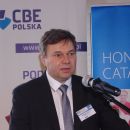 Wiesław Jamiołkowski, Director of the Department of Environmental Protection, PGNiG SA Termika announced that the company has already adapted part of their equipment to the IED requirements. The expert stressed that when speaking of the Directive mainly have in mind what is contained in the fifth appendix: rigid digits assigned to different "power" parameters and the typical "classical" pollutants, as so compounds of sulfur, nitrogen and dust. "The sacramental 200, 200 and 20mg branded already in our consciousness - are the parameters for the biggest sources that will need to be met in 2016.
Wiesław Jamiołkowski, Director of the Department of Environmental Protection, PGNiG SA Termika announced that the company has already adapted part of their equipment to the IED requirements. The expert stressed that when speaking of the Directive mainly have in mind what is contained in the fifth appendix: rigid digits assigned to different "power" parameters and the typical "classical" pollutants, as so compounds of sulfur, nitrogen and dust. "The sacramental 200, 200 and 20mg branded already in our consciousness - are the parameters for the biggest sources that will need to be met in 2016.It is worth mentioning about what is happening around the discussion of BATs. In the process of implementation of the Directive Member States renegotiated requirements in great details. 200/200/20 was the result of many years of discussion. Discussions around BATs tend to be more behind the scenes, and the mentioned amount of 12 billion PLN for IED investments may be underestimated. In addition to the best available techniques, it is worth mentioning that the initial reports are little known and underrated, but extremely important element, because wanting to consume derogations, the integrated permits have to be changed, and no authority will accept this change without presentation of the initial report.
Jamiołkowski stressed that on the one hand, we aspire to reduce classic pollutions, on the other hand we have to take into account the so-called associated substances. With the reduction of nitrogen-based are used technologies for the incomplete combustion (the zoning of air), emiting carbon monoxide and ammonia compounds.
Similarly, the desulfurization - any technology is associated with the emission of pollutants associated hydrogen chloride and hydrogen fluoride. The expert drew attention to the fact that something must be done with captured sulfur dioxide. If you can produce quality gypsum then sawage water contains all "evil" that was catched in the filtration process. We are facing the entire process on the best available techniques of sewage water discharge to the receiver, with which are grapple with the EC Siekierki experts.
PGNiG Termika representative said that in case of dust emissions we are no longer speaking about the effectiveness of electrofilters, but about the effectiveness of the capture different fractions as so PM-10, PM-2.5 dust, but also what we emitting and depositing on particles of pollution, or mainly by emissions of mercury to the atmosphere. Jamiołkowski reminded that Poland is the infamous leader of mercury emission.
Implementation of technology to reduce emissions of particulate matter
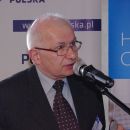 Krzysztof Filipowski, CEO at Pentol-Enviro Poland announced that he represents the company which operates in Poland for 30 years and is associated with two fundamental aspects of the activity: the reduction and control of pollution emitted into the atmosphere, and the optimization of combustion process in power boilers and industrial furnaces. Filipowski said that there are basically two alternatives reduce dust emissions from the installed electrofilter. There is possible the modernization or replacement to a larger one or search for physical methods to improve the efficiency of the existing electrofilter, primarily by reducing the resistivity of the ash, which is called flue gas conditioning.
Krzysztof Filipowski, CEO at Pentol-Enviro Poland announced that he represents the company which operates in Poland for 30 years and is associated with two fundamental aspects of the activity: the reduction and control of pollution emitted into the atmosphere, and the optimization of combustion process in power boilers and industrial furnaces. Filipowski said that there are basically two alternatives reduce dust emissions from the installed electrofilter. There is possible the modernization or replacement to a larger one or search for physical methods to improve the efficiency of the existing electrofilter, primarily by reducing the resistivity of the ash, which is called flue gas conditioning.Pentol company representative stated that the determination of the suitability of flue gas conditioning is primarily based on the analysis of elektricity-voltage characteristics and composition of the ash. The correct interpretation of electricity-voltage characteristics often allows diagnosis of mechanical electrofilter faults. When you remove the shortcomings you can based on the i=f (U) characteristics and with high accuracy determine the desirability of the use of flue gas conditioning. The composition of the ash allows the estimation of the level of its resistivity and pre-determine the doses of SO3. Lowering the resistivity by one grade can be compared roughly to double the size of the electrofilter.
As Filipowski reported, in some cases, low-sulfur coal combustion combined with the use of flue gas conditioning enabled canceling the installation of flue gas desulphurisation or allow significantly postpone this decision in time. The practice of recent years has shown a new direction of flue gas conditioning application, namely in conjunction with the installations of wet flue gas desulphurization (IOS). IOS manufacturers usually specify the maximum dust level in flue gas at the inlet to the absorber, enabling the desired whiteness of gypsum and system availability. According to the expert, the major problems caused by excessive levels of dust entering the desulphurisation instalation is firstly - low quality (whiteness) of gypsum (about 70%), which often result in disqualification for sale; secondly, the need to periodically (approximately every 3-4 weeks) withdrawal of the block for two days to clean desulphurisation exhauts instalations. Additional benefits in favor of the proposed by Pentol conditioning exhaust is the possibility of burning coal blends with a sulfur content of 0.5% and the burning of low-sulfur coal without mixing him. Filipowski added that in the case of new installations it is possible to build electrofilter of a smaller size, if provided for simultaneous use of flue gas conditioning.
Reducing emissions in the Radom "Północ" district heating
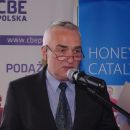 Dariusz Podgórski, Head of the Heating Plant "Północ" belonging to Radomskie Przedsiębiorstwo Energetyki Cieplnej RADPEC SA, recalled that his company currently has two sources of heat - heating plnat "Południe", where seven water boilers WR-25 are installed and Heat "Północ", where four such boilers are installed. Since 2012, the company performs the task of reducing emissions through the modernization of these WR-25 boilers. The project uses the Norwegian funds. 30% of the funds - PLN 958,500 - which are used for the project comes from the Norwegian Financial Mechanism. The estimated cost of the project is 3.9 million PLN . The project includes two ash disposal installations -on third and fourth boiler - and a system of building economics zero on the boiler fourth. Podgorski said that RADPEC intends to avail of the derogation. Expert expects that in 2016 the plant will be able to have the same parameters as the emissions for 2015 in the integrated permit, so in SO2 - 1500mg / m^3, in NOx and dust - 400mg / m^3. According to the RADPEC assumptions, new ash handling system had to fit in the old scale of the cyclone system. In addition, dust separation efficiency is expected to be less than 100 mg per normal cubic meter per sixpercentige oxygen. Additionally RADPEC assumed the possibility of a variants cyclonefilter work - to 15MW opportunity to work with cyclones or bags, above this ceiling work on two devices (15MW is thermal basis for Radom, of such load boiler is working during the summer).
Dariusz Podgórski, Head of the Heating Plant "Północ" belonging to Radomskie Przedsiębiorstwo Energetyki Cieplnej RADPEC SA, recalled that his company currently has two sources of heat - heating plnat "Południe", where seven water boilers WR-25 are installed and Heat "Północ", where four such boilers are installed. Since 2012, the company performs the task of reducing emissions through the modernization of these WR-25 boilers. The project uses the Norwegian funds. 30% of the funds - PLN 958,500 - which are used for the project comes from the Norwegian Financial Mechanism. The estimated cost of the project is 3.9 million PLN . The project includes two ash disposal installations -on third and fourth boiler - and a system of building economics zero on the boiler fourth. Podgorski said that RADPEC intends to avail of the derogation. Expert expects that in 2016 the plant will be able to have the same parameters as the emissions for 2015 in the integrated permit, so in SO2 - 1500mg / m^3, in NOx and dust - 400mg / m^3. According to the RADPEC assumptions, new ash handling system had to fit in the old scale of the cyclone system. In addition, dust separation efficiency is expected to be less than 100 mg per normal cubic meter per sixpercentige oxygen. Additionally RADPEC assumed the possibility of a variants cyclonefilter work - to 15MW opportunity to work with cyclones or bags, above this ceiling work on two devices (15MW is thermal basis for Radom, of such load boiler is working during the summer).Changed by: Kamil Szkup
Article has been prepared based on the lectures and materials from the international conference "IED FORUM", which on May 22 this year. was organized by a team of CBE Poland.
Honorary Patronage over the event had: Chief Environmental Protection Inspector Andrzej Jagusiewicz, Central Institute of Mining (GIG), Metallurgical Chamber of Industry and Commerce, Polish Association of Wood Industry, Polish Confederation Lewiatan, Polish Association of Power Engineers and the National Chamber of Recycling Commerce .
Strategic partners of the conference were: AIG, Pentol-Enviro Poland Sp. z o.o and Johnson Matthey Catalysts GmbH. Sponsor of coffee break during the IED Forum was the company Lodge Cottrell Ltd. In addition, to the IED Forum were involved the representatives of: Ministry of Environment, the National Fund for Environmental Protection and Water Management, PGNiG Termika, Tauron Wytwarzanie SA, Spółka Energetyczna Jastrzębie SA, RADPEC SA, MPEC Olsztyn, Jastrzębska Spółka Węglowa, Cement producers Association, the Polish Committee for Electricity and EURELECTRIC.
Among the Media Patrons were: re-database.com, eu-recycling.com, balkans.com, allconferences.com, infor.pl, inzynieria.com magazine "Oil and Energy", gramwzielone.pl, eip-online.pl, ioze.pl, odnawialnezrodlaenergii.pl, ebiomasa.pl, ekonews.com.pl, ogrzewnictwo.pl, srodowisko.pl, "Business & Ecology", oze.pl, ogrzewanie.info.pl, biznesalert.pl, srodowisko.abc .com.pl, inzynierpv.pl, energetykacieplna.pl and energiamax.pl. Professional simultaneous translation was provided by company Bireta.
We would like to thank to all participants and partners involved in the event and patrons. Feel free to ask additional questions relating to individual instances, to share with us proposals and participate in the subsequent events organized by us.




































































































